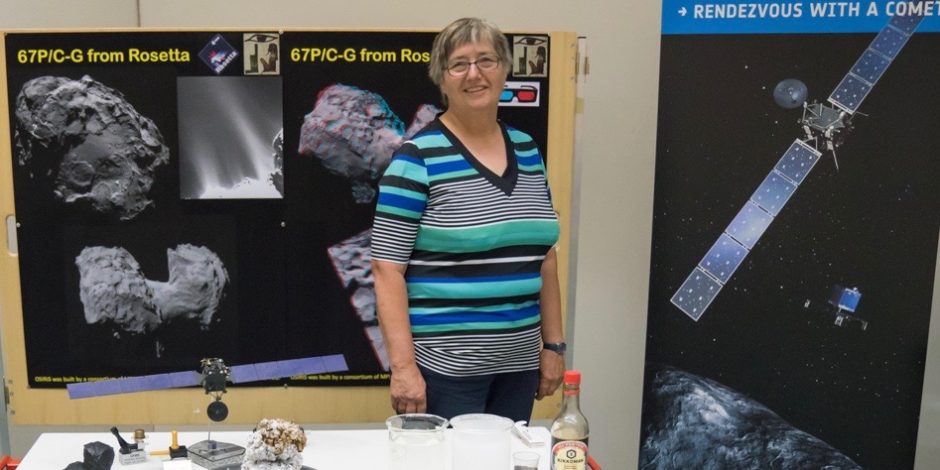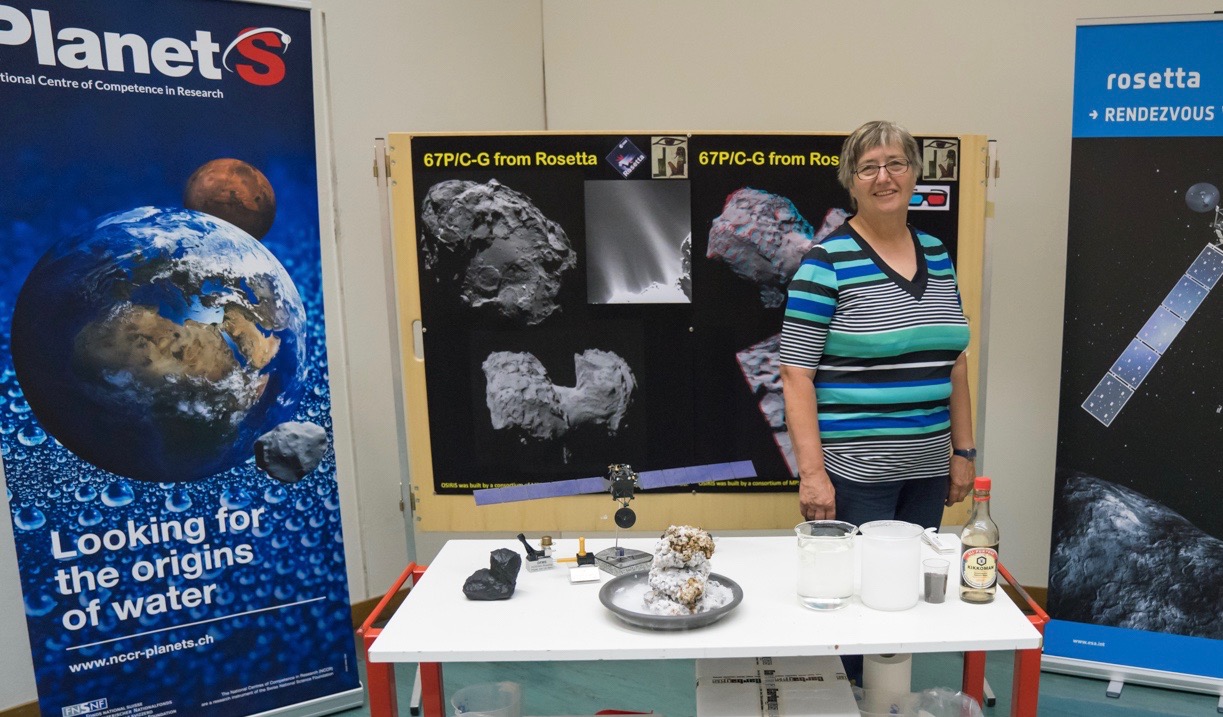“It was the most exciting mission”

On Friday 30 September 2016 the European spacecraft Rosetta will crash into the comet Churyumov-Gerasimenko. Aboard the Rosetta spacecraft is the instrument ROSINA, which was developed by Physics Professor Kathrin Altwegg and her team at the University of Bern.

Kathrin Altwegg presents model comets consisting of dry ice, dirt and soy sauce. (Photo Sylviane Blum)
PlanetS: You will lose an instrument that you have grown very fond of – it has become almost like a child. Is this a difficult moment?
Kathrin Altwegg: I have mixed emotions about the end of the mission because Rosetta was by far the most successful and the most exciting mission that I have witnessed. Perhaps one can compare it with a top athlete who should resign at the peak of his career. Of course, it is clear that I would not take anything as beautiful and expensive as our ROSINA instrument and throw it on the floor at home. But that’s exactly what we will do.
What will happen during the crash?
The probe will plunge unabated to the comet´s surface. We talked a lot about a possible braking maneuver. The team responsible for the on-board camera wanted to implement a braking system in order to increase the opportunities for the transmission of a final image. However fuel – a hydrazine rain – would have showered on our instrument, which would have made measurements impossible. We won: Now Rosetta will hit the comet`s surface at a velocity of 90 centimeters per second instead of at 60 centimeters per second.
What results do you expect?
We can create a wonderful profile of the comet`s atmosphere, also referred to as the coma, by measuring the density, the velocity and composition of the gas. We will start at a distance of 19 kilometers and then get closer to the surface. We will reach a region in which the gas is accelerated, and at the very end, we will come into a layer in which collisions between molecules play a role. This has never been done before. For example, these results are of particular interest for those researchers who create models of the coma.
What have you discovered with ROSINA so far?
So far we have found 60 different molecules in the comet´s coma. And there is more to be discovered as we have not yet reached the end. Among the most important measurements is that of heavy water. As a result of this analysis we could demonstrate that the water on Earth does not come exclusively from comets, thus ending a discussion that has been ongoing for a long time. Today it is believed that water may have originated during the beginnings of the Earth itself. However, as our measurements show, the noble gas Argon could have been brought to Earth by comets. In the case of the noble gas Xenon, we may have found its original form, which was postulated in 1974, but had not yet been discovered.
Also of importance is the large number of organic molecules that we have found, including amino acids. We have discovered that there are many molecules on the comet that up to now were considered to be bio-indicators, but of course there is no life there.
What do you consider to be the main findings from Rosetta?
Evidence has been found that the environment in the Solar System, at least where comets originated, was much more gentle than suggested by previous models. Even the smallest elements of the comet are loose aggregates. If they had collided with something else, they would be much more compact. Comet Chury consists of 75 percent empty space, which means that it is very porous. This rules out violent collisions. As there is no evidence that the comet had ever been heated, it does not seem to have been part of a larger object that broke apart in a collision.
Although you have reached retirement age, do you still plan to continue to do research?
I will continue to support our group with my knowledge. The analysis of the ROSINA data will take another 10 years. The instrument is fantastic, much better than we thought, however, it is also a beast because there are many small, fine details one needs to be aware of. I will no longer work full time. My husband has been retired for a year and he is pleased that we can now do more together.
Categories: External Newsletter, News

